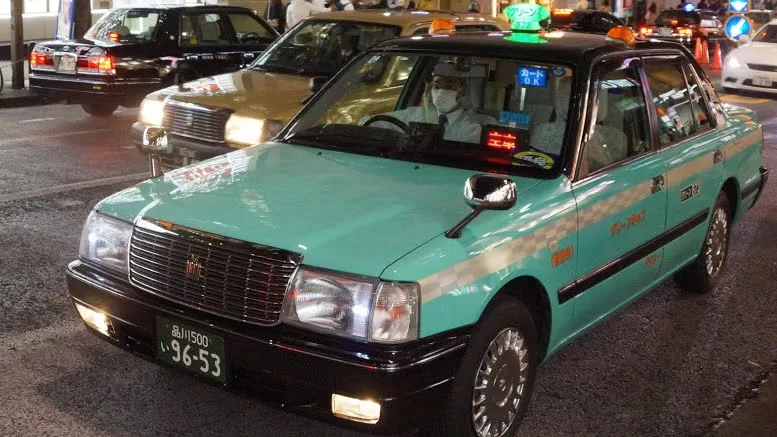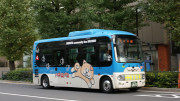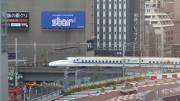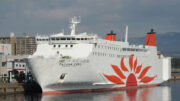In all centres of Japan, especially around major railways, there is no shortage of taxis when you need one. Since 2017 the popular and 1980s styled Toyota Crown Comfort or Nissan Cedric have been increasingly replaced by a new purpose built taxi known as the Toyota JPN Taxi.

Prior to Japan’s Olympic bid win, the Japanese Government decided that the countries taxi fleet needed to be modernised. The design brief required the taxi to be wheelchair accessible and have low emissions. The design Toyota came up with in 2017 meets both these goals, being a hybrid powered vehicle and having a boxy London Taxi type shape that allows for easy access to the rear sliding door. Prior to 2017 the Toyota Crown Comfort was the most popular taxi around Japan with many still on the roads. Based on an old model Toyota Crown that was first launched in 1995, these cars ended production in 2017 and only had a slight facelift since their launch in 1995. Nissan also made their 1987 based Cedric for taxi use until 2015. Both cars look remarkably like the early 1980s models they replaced. The plain and boxy styling and a RWD layout was favoured by the Japanese taxi driver, so the manufacturers didn’t want to mess with something that worked so well. The Crown Comfort was by far the more popular of the two cars and was also exported to Hong Kong for their taxi market. Nissan also made a taxi called the Crew from 1993 to 2009. Similar to the Cedric and the Crown, sometimes it’s hard to pick who made which taxi from a distance. The modern Toyota JPN taxi is worlds apart in terms of design, but is instantly recognisable as a taxi bearing a strong resemblance to the London black cab but with a modern style front end.
Most taxis will hold 4 passengers (3 and driver) and to tell if a taxi is vacant you need to look for the red plate on the dashboard and the roof. Strangely, when the car is booked, the plate is green. So red is yes vacant, and green is no booked – that’s Japan for you!
There are a couple of unique things about the Japanese taxi, the rear passenger door is electronically opened by the driver, and there’s no need to close it either as the driver also has a control to close it and open it again when you get to your destination.
The Japanese taxis may not be the most luxurious sedan, but they have been specially designed to suit being a taxi. The driver is often exceedingly gracious and is always dressed in an extremely neat shirt and tie. He will usually also wear a hat with white gloves. The taxi seats are also unique; fitted with white linen seat covers filled with lace and embroidery, they make the Japanese taxi experience all that more special.
Unlike most cities in the world, tipping is a big no no, so you should only pay the price on the meter as taxi drivers are not allowed to accept any more. All service charges are built into the price of the fair.
Japan’s street naming and numbering system is extremely difficult for those who don’t understand it, and as most taxi drivers do not speak English, it is advisable to have someone from your hotel or another Japanese-speaking person help you with your destination, even if it is just written on a piece of paper. Maps and English spelling can sometimes only help to confuse the situation.
Like most cities, the taxi is one of the most expensive forms of public transport, with fares typically starting around 600-700 Yen for the first two kilometres and increasing by roughly 100 Yen for every additional 500 meters. The cost does also rise when the taxi is not moving for a prolonged time. Late in the evening, rates are raised by 20-30 percent.




